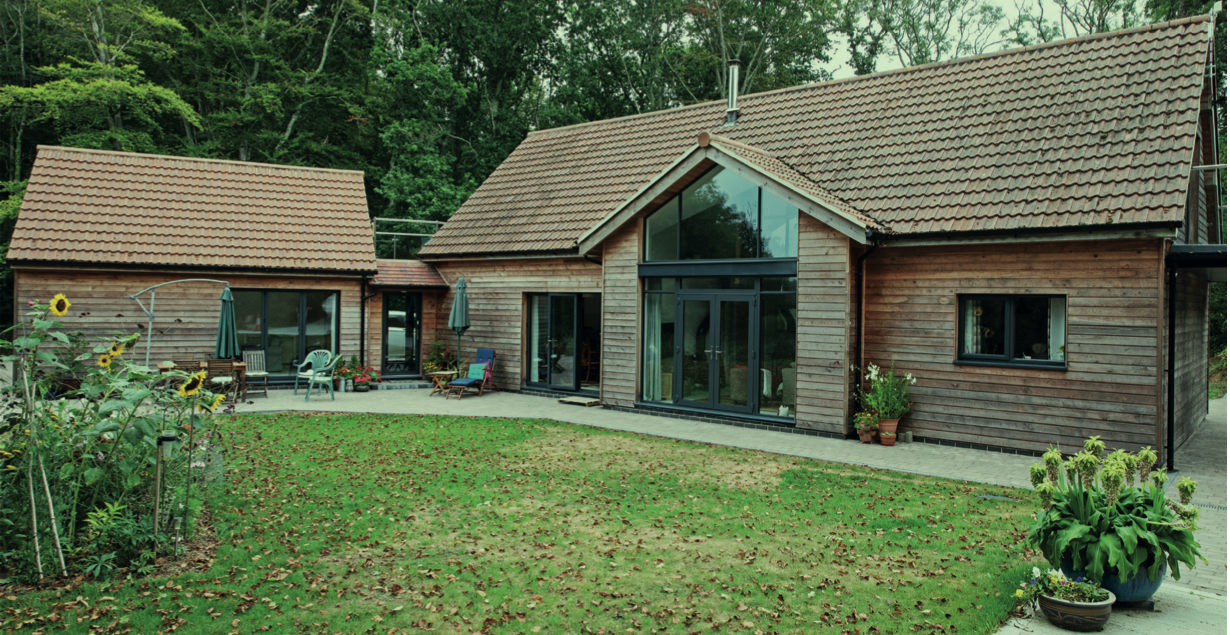Off-grid living, a growing trend
Following research done by scientists Copernicus Climate Change Service 2023 has been declared as the hottest on Earth, ever since records began; 2024 could be even hotter. It is therefore no coincidence that the interest in building sustainable and off-plan homes is on the increase. “We are receiving an increasing number of enquirers from people looking to live off-grid, without the connection to any mains services – a dream for many people but perhaps one few are able to realise.
Dorset off-grid
A project which we recently completed in Dorset has proved a great success, with the owners now living in the home of their dreams, having now completed their first year in residence. Features incorporated in design are environmentally sustainable, energy efficient creating a great living environment. Whilst most of us are facing daunting energy costs, our client have been delighted with the total energy running costs for the year of £250, and the house generated its free electricity they were able to power their electric car, at no cost!
We are keen to support clients in their search, planning and build of their off-plan homes. Here are some key considerations and trends in climate-responsive house design:
Choosing your off-grid site
You can do many things to a property, especially one you are building from the ground upwards. So choosing the right site needs careful research, and consideration of many aspects. Advice is essential, get the location right, in every respect.
Passive Design:
Passive design’ is a specific approach that works with the local climate to maintain a comfortable temperature in the home. Good passive design should reduce or ideally eliminate the need for additional heating or cooling, affected by design and site location, ideally working in tandem with the occupants to acheive the greatest efficiencies.
Energy Efficiency:
Incorporating energy-efficient technologies, such as high-performance insulation, double-glazed (or even triple) windows, and energy-efficient appliances, can significantly reduce a home’s carbon footprint.
Renewable Energy Integration:
Integrating renewable energy sources like solar panels and / or wind turbines and heat pumps allow homes to generate their own clean energy, reducing reliance on non-renewable sources. When the plan is off-grid, the commitment is clear.
Water Conservation:
Implementing water-saving technologies, such as rainwater harvesting systems and low-flow fixtures, helps in conserving water resources, especially in regions prone to drought. Every aspect is a saving and important.
Green Roof and Walls:
Green roofs and walls provide insulation, improve air quality, and mitigate the urban heat island effect. They can also contribute to biodiversity, creating a really aesthetically pleasing environment.
Resilience to Extreme Weather:
Designing homes to withstand extreme weather events is crucial in the face of climate change. This includes using resilient materials and construction techniques, seamlessly and sensitively incorporated into the design, creating some fabulous homes.
Smart Home Technologies:
Smart home technologies are not the future, they are now! Clever use of technology need not be expensive, carefully enhancing, energy efficiency, allowing homeowners to monitor and control energy usage, heating, cooling, and lighting systems at their finger tips.
Sustainable Materials:
Choosing eco-friendly and sustainable materials, such as recycled or reclaimed wood, bamboo, and low-impact paints, helps reduce the environmental impact of construction. This isn’t restrictive, it’s inspiring. The results can be fabulous.
Local Adaptation:
Considering local climate conditions and the surrounding environment is essential. Designing homes that are adapted to the specific climate and geography of the location enhances energy efficiency and resilience.
Community Planning:
Planning communities with green spaces, pedestrian-friendly pathways, and sustainable infrastructure promotes a more resilient and environmentally conscious living environment. Think beyond the obvious, there are opportunities beyond the main building. Maximising impact is the aim.
Architects, builders, and homeowners are increasingly recognising the importance of incorporating these principles into residential design to mitigate the impact of climate change and create more sustainable living spaces, create sustainable solutions and enjoy real cost efficiencies.
PMA has real experience in designing for the future. Careful planning and expert attention to design detail will have a lasting impact. Time spent now will deliver benefits over time. Retrofitting is rarely as efficient, never easy and always expensive. Talk to PMA about your off-grid plans; take the first step in realising your dream.
Peregrine Mears Architects PMA
